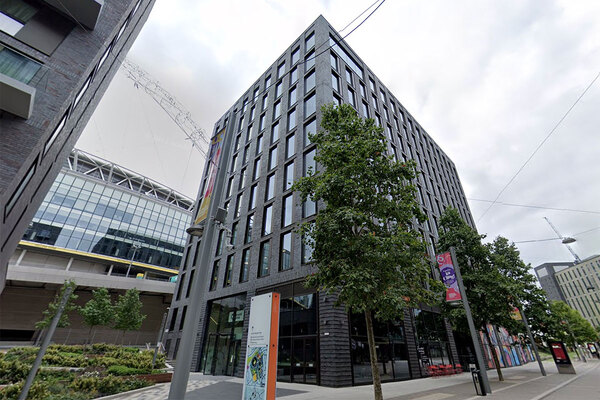House proud: Health
Last week, we launched House Proud, our campaign to put housing at the heart of the general election debate. In the first of a series of articles showing how housing benefits all the main policy areas, Lydia Stockdale looks at the links between housing and health
This winter has been the coldest in a generation. So now, more than ever, we can appreciate the importance of having a warm home to return to at the end of the day.
When housing fails to perform its most basic function - keeping its inhabitants safe, warm and dry - it can cause or exacerbate some of the most common health conditions, circulatory, respiratory and mental health problems among them. Decent, well-adapted housing also maintains older peoples’ mobility and minimises falls.
Last week, Inside Housing and the Chartered Institute of Housing launched the House Proud campaign. As the nation prepares to vote for the next government, House Proud presents policymakers with the case for housing. Its aim is to show how decent housing contributes to savings across the public sector - and why it should play a major part in this election campaign and beyond.
Our series of features demonstrating how housing benefits the big-hitting policy areas kicks off with a focus on health.
Housing’s cost benefits
Our increasingly diverse and ageing society is placing more and more pressure on public services. In a report on housing, health and care published last month, the CIH stated that failing to tackle the situation would mean a 325 per cent increase in care costs by 2014. And housing has a significant role to play in holding these increases in check - for example, low-cost adaptations can help people live independently at home, or facilitate early discharge from hospital.
Across the country there are examples of the housing and health sectors working together in innovative ways to ensure good healthcare reaches all communities - and bringing long-term savings for the NHS into the bargain.
Doctors in Sandwell in the west midlands, for example, have been prescribing housing repairs as part of their treatments for patients since 2000. Neeraj Malhotra, a public health speciality registrar at Sandwell Primary Care Trust, believes that widespread recognition of the importance of housing in public health is essential if the NHS is to remain sustainable. ‘If we are to effectively budget for healthcare we need to work in partnership with other services, including housing,’ she says.
Last November, the Audit Commission reported a 4 per cent increase between 2007/08 and 2008/09 in the number of hospital day patients in the UK, and nearly an 8 per cent increase in outpatients. Meanwhile the NHS had to pay more for treating all of these people, with the tariff for procedures going up by an average of 2.3 per cent.
‘The only way to manage this increasing demand on the NHS is to keep people well outside of hospital, and stop health conditions from deteriorating. Housing plays an integral part in this,’ Ms Malhotra states.
Although it doesn’t often shout about it, the government agrees. When the Communities and Local Government department, the Department of Health and the Department for Work and Pensions launched their National Strategy for Housing in an Ageing Society in February 2008, they acknowledged that ‘decent housing makes a fundamental difference to mental and physical health and well-being and has a critical contribution to make to the value and effectiveness of the health and care systems’.
Poor housing conditions increase the risk of severe ill health or disability by up to 25 per cent during childhood and early adulthood, a report from Shelter published in November reveals.
It also shows that children living in bad housing are more likely to suffer respiratory problems including asthma and bronchitis. Those living in acutely bad conditions are more likely to attend accident and emergency in a year than other children - 24 per cent in comparison to 20 per cent.
The list goes on. Government-backed research into the financial benefits of the Supporting People programme, which has provided housing-related services for vulnerable people in the UK since 2003, shows how improved housing, along with care and health services being centred around the home, represents excellent value for money for the public purse.
In a report released in July last year, researchers calculated that the £1.6 billion invested in the programme every year results in £3.41 billion savings to other services. Total benefits were £6.28 billion with £315.2 million saved by the NHS alone.
On a smaller scale, individual landlords are saving the NHS money by offering streamlined floating support to residents who need extra care. Nottingham Community Housing Association estimates that it is saving the health service £26,036 per year by reducing visits to accident and emergency through its smart scheme which offers residents 24-hour support.
Ageing Britain
The problems associated with an ageing UK society are real and increasing. Already 30 per cent of households are headed by someone over 65. By 2026, this number will have risen by 48 per cent - an additional 2.4 million households. By 2036, the number of people aged 85 and over will be 2.3 million. Forty per cent of people aged 80 and above report that they are living with a long-term illness or disability, and 1.5 million have a condition requiring specially adapted accommodation.
One way in which health services and housing providers are preparing for this is to develop extra care housing which supports frail older people to maintain their independence.
In Gloucester, for example, the PCT worked with Hanover Housing Association, Gloucester Council and Tewkesbury Council to build a residential scheme for people aged over 55 with health and care needs. The development includes an onsite health and well-being centre, giving 24-hour access to health and care services.
Forty per cent of the nation’s £32 billion hospital and community health care bill is spent on over 65 year olds - 16 per cent of the population. This type of scheme aims to reduce expenditure while providing a more convenient service to residents.
And if you’re still not convinced that having a stable home is good news for our health and for the NHS budget, read on. Shelter’s Living in limbo report, published in 2004, shows that more than 78 per cent of people living in temporary accommodation say they have a specific health problem. Half claim to be suffering from depression. And half say their health and that of their family has suffered due to living in temporary accommodation.
The extra financial cost of living in temporary accommodation includes around £30 million in additional take-up of sickness benefits by one in 12 households. Moreover, about £10 million extra is spent on additional visits to GPs because of worse health among one in four such households.
‘All health conditions are exacerbated when your accommodation is unstable,’ says Peter Cokersell, director of programmes at homelessness charity St Mungo’s.
Supporting people to retain their accommodation, helping them move to more suitable homes where they will be looked after, and helping individuals get early treatment for mental health problems can often stop people falling into homelessness, he adds.
Social landlord One Housing Group’s Ponders Bridge scheme in Islington, London, demonstrates how the sums add up. It houses 12 people with complex mental health needs and employs seven support staff, and saves the NHS £162,060 per year.
Likewise, in Willington, County Durham, Three Rivers Housing Association’s St Stephen’s facility for people with severe mental health needs consists of eight self-contained flats and saves the NHS £135,000 per year. That’s £16,875 per person.
The figures speak for themselves.Investing in housing pays dividends no country can afford to miss out on. A healthy nation is a well-housed nation. And whoever ends up running the UK later this year must pay housing its dues.
The CIH says
‘Without a focus on the links between good housing and good health, governments will never achieve good quality of life, sustainable communities, or economic inclusion. Nor will they reduce costs in the NHS. The poor health of an ageing population, pressures to reduce public spending, and the gaps between life chances of the richest and poorest are very challenging and affect the whole population. It is obvious that bad housing and communities can cause and sustain ill health. It is also obvious that bad or unsuitable housing increases health and care costs.
‘Take one example, a man called John whose house was cold and whose recurring bronchitis required repeated GP visits, medication, time in hospital, time off work, and benefit claims. Home improvements stopped all of this almost instantly. Any government should understand that health targets and promises will not be met without good housing in thriving communities, and they should support transformation in the way we plan for, commission and deliver health, care and housing services.’
Abigail Davies is head of policy at the Chartered Institute of Housing
GPs lookout: Sandwell’s early warning system
When a patient with a heart condition or respiratory problem walks into a GP’s surgery in Sandwell, west midlands, they are likely to be asked about their living conditions.
The patient may then be referred to Sandwell Council’s ‘warm zone’ service and be given a prescription for repair work to their home.
Since 2000, Sandwell Primary Care Trust has been running a scheme called repairs on prescription, which leads to between 30 and 40 referrals to the warm zone - a national service tackling fuel poverty - each year.
Neeraj Malhotra, a public health speciality registrar at Sandwell PCT, is trying to secure funding to take this work a step further. She wants to train district nurses and health visitors in how to spot where housing improvements could prevent the deterioration of circulatory and respiratory conditions and mental health problems, and decrease the risk of falls. The National Osteoporosis Society estimates hospital and social care costs for a single hip fracture are £25,300.
‘If people live in cold, damp homes there is an increased chance of being admitted to hospital,’ Ms Malhotra adds. ‘We want to make sure that housing is an integral part of care.’
Working in partnership
In Liverpool, the Healthy Homes programme aims to prevent death and illness due to poor housing conditions and accidents in the home. Funded by the city’s primary care trust and run through the council, it seeks to reach 15,000 private rented properties, with the initial focus on areas that have the greatest health problems. The project is likely to cost about £4.5 million over three years from April 2009.
Phil Hatcher, the programme’s manager, says that the housing, health and safety rating system introduced in the Housing Act 2004 ‘allowed us to go to the PCT and say, “Look, if you
were to remove these hazards from homes, you will reduce the number of hip fractures, or the number of excess winter deaths and reduce the number of hospital visits.” ‘
Liverpool’s stock condition survey for 2006 revealed that 18 per cent of private rented sector housing contained conditions serious enough to impact health, and this affected 11,700 people.
House Proud stats: health
Every £1 spent adapting 100,000 homes where a serious fall is otherwise likely to occur saves the NHS £69.37 over 10 years.
Every £1 spent improving 100,000 homes where residents are likely to require treatment due to excess cold saves the NHS £34.19 over 10 years.
Every £1 spent dealing with overcrowding in 100,000 homes where it is likely to lead to health problems saves the NHS £6.71 over 10 years.
Source: calculated using the Housing Health and Safety Rating System Costs Calculator by the Chartered Institute of Environmental Health and the Buildings Research Establishment, 2008
House Proud: the aims
1. Get 250 backers to sign our petition via www.insidehousing.co.uk/houseproud
2. Persuade the three main political parties to include a housing pledge in their election manifestos
3. Get the sector fighting housing’s corner - making housing a key election issue at every opportunity, and encouraging staff, residents, friends and family to do the same
How to get involved
- Sign our online petition in support of our three aims to gain 250 backers at www.insidehousing.co.uk/houseproud, get housing pledges into the manifestos of the three main political parties and get the sector to talk up housing as a key election issue.
- Suggest a housing pledge for the parties’ election manifestos, also at www.insidehousing.co.uk/houseproud. We’ll pick the best and pass them on.
- Pledge to drop House Proud statistics into as many conversations as possible.
- Ask prospective MPs what they’re doing about housing and persuade them to sign the House Proud petition.
- Send us your stories, videos, blogs and statistics about how housing has proved its worth in your area.











